Introduction
Light rail (or LRT) is a type of transit which uses street-running, at-grade trains to transport passengers. It’s been seeing a growing surge of interest in American cities over the last few decades, and politicians across the country are proposing light rail as a solution to their cities’ transit challenges. The reason is that light rail is seen as a technology which can improve a city’s transportation network at a fraction of the cost of heavy rail (i.e. subways or elevated rail).
However, I strongly feel that we should not be pursuing the construction of new light rail (and the related mode of streetcars) systems in America. The simple reason for this is cost - new light rail lines cost anywhere between $100 million to $200 million per mile to construct. As an example, the proposed 5.6 mile St. Louis Green Line is projected to cost $1.1 billion.
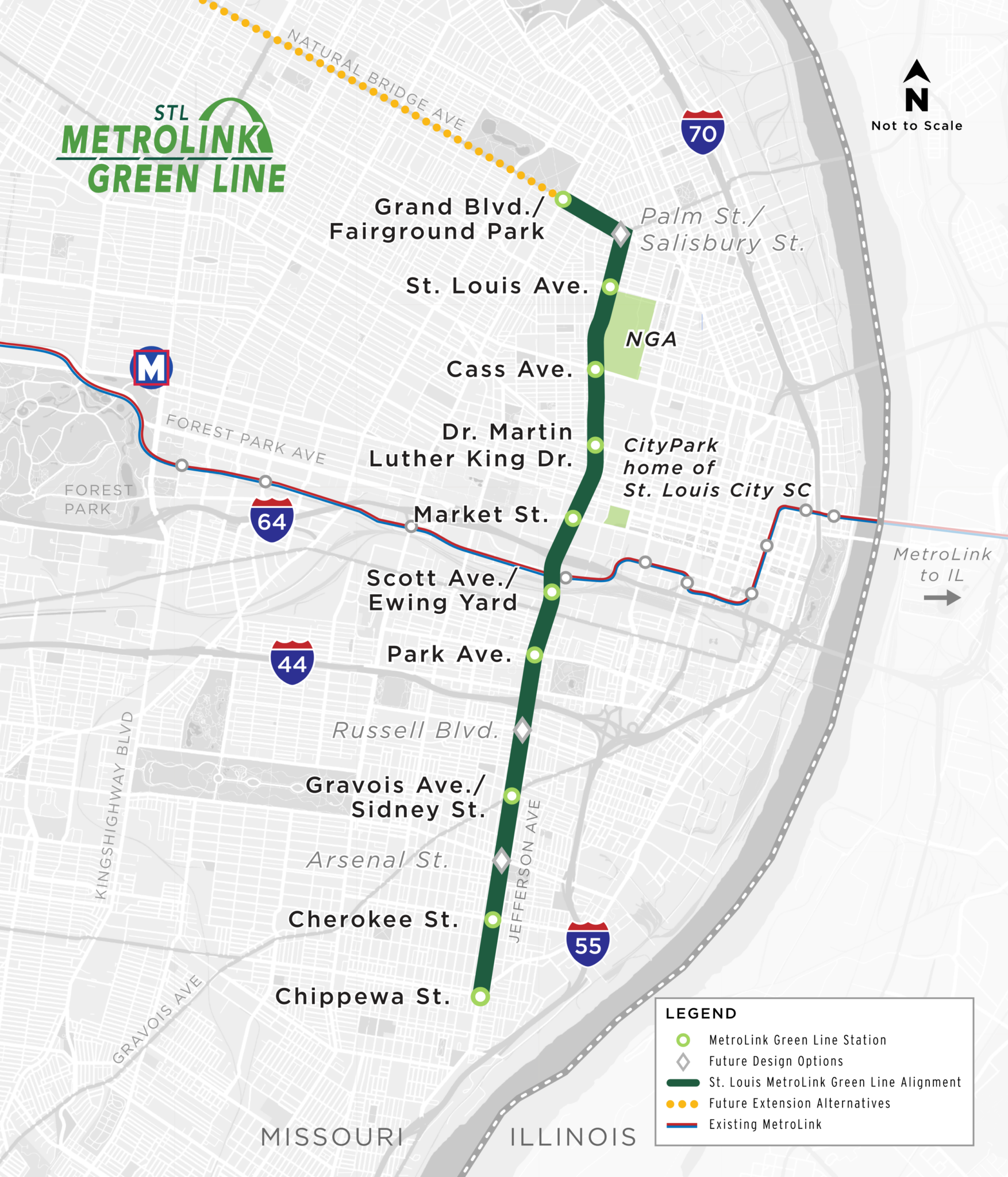
This high price tag isn’t inherently a bad thing. There have been many expensive projects over history which were well worth the cost. The problem with light rail specifically is that we get almost no value back from its construction. For transit riders, there are almost no benefits to a light rail line over a simple bus line, and in a lot of respects, light rail is even worse for riders. And for cities as a whole, light rail does lead to some improvements and increased development, but at a scale which is very out of line with its high cost.
Instead of light rail or streetcars, I propose that transit agencies invest heavily in a different mode of transit - “Light BRT”. If you haven’t heard of this term before, it’s because I invented it for the purposes of this article, as there is no single widespread term which characterizes this mode. I’m personally hoping that the phrase Light BRT catches on, as it’s a very convenient nomenclature to describe these existing transit lines and in a way which is easily distinguishable from the more traditional Gold-Standard or Heavy BRT.
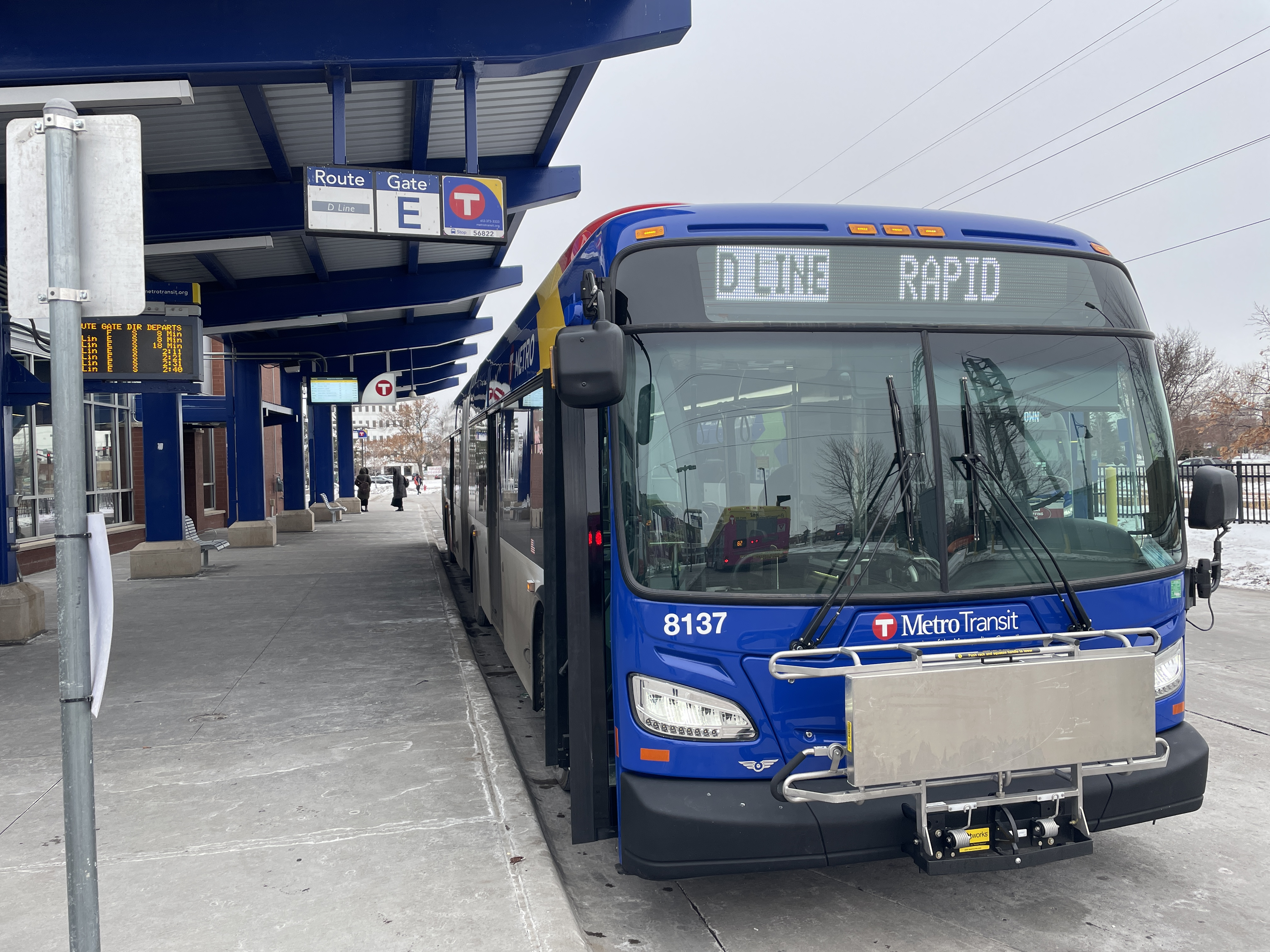
So what is Light BRT? Essentially, Light BRT is a type of city bus which includes many infrastructure upgrades to increase the speed and reliability of the bus line. While not every light BRT line has all of these features, in general, light BRT lines are characterized by the following:
- Wider stop spacing: Light BRT buses have stops every 1/4 to 1/2 miles, rather than the 1/8 to 1/4 mile stop spacing of regular city buses. This reduces the amount of time the bus spends at stops.
- High frequency: Light BRT lines come frequently, ideally at least every 10 minutes. This reduces passenger waiting time.
- Signal priority: Light BRT buses have technology which integrates with city traffic lights. This reduces the amount of time the bus is waiting at a red light.
- Off-board fare collection: Instead of the bus operator collecting fares for each passenger, passengers pay at the station itself, and fares are validated using a proof-of-payment system. This reduces the amount of time the bus spends at stops.
- Bus lanes: Light BRT may operate either entirely or partially in dedicated transit lanes. This increases bus travel speeds while in motion.
- Larger buses: Light BRT takes advantage of larger articulated buses with many doors. This increases the capacity of the system and reduces the amount of time the bus spends at stops.
Each of these improvements leads to a much nicer transit experience for passengers, directly leading to faster trips and higher ridership. For example, in Minneapolis, the D Line launched in late 2022, where they implemented most of the above features on the existing #5 local bus. The D Line was a huge success, well beyond anyone’s expectations. In the first month alone, ridership on the D Line increased 50% when compared with the previous city bus. And by the end of the first year, ridership had nearly doubled! As of early 2024, the D Line has a ridership of over 13,000 daily riders, a number which is actually higher than many light rail systems, and this number is projected to hit 23,000 riders by 2030.
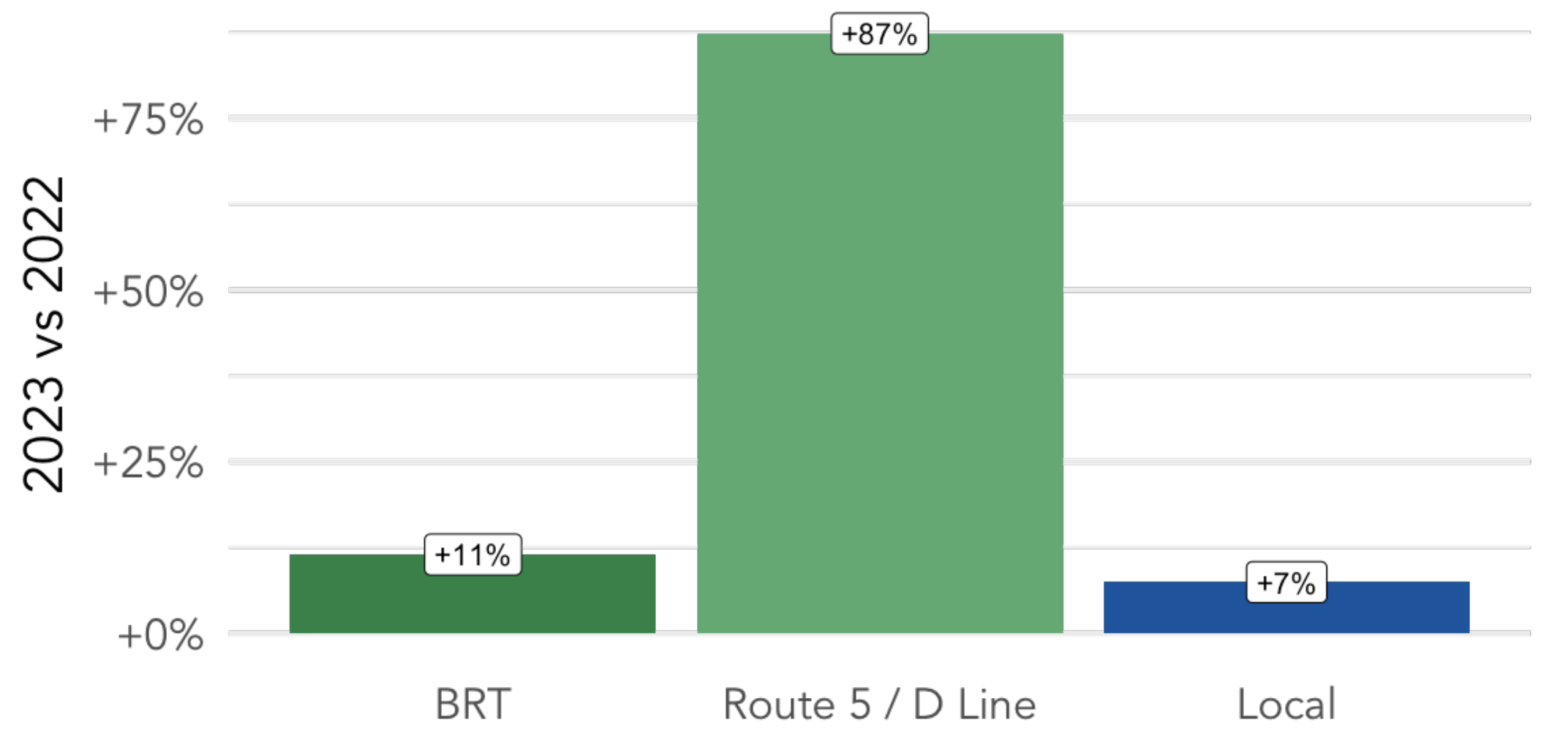
And the best part? This line was incredibly cheap. The 18 mile D Line cost about $75 million in total to construct, for an average cost of about $4 million per mile. Compared to light rail, which can cost $200 million per mile, light BRT is a steal. Or in other words, for the same cost it would take to build a 5 mile LRT line, we could build over 200 miles of light BRT, leading to a much better transit network for an entire city.
As a side note, I want to contrast Light BRT with the more traditional form of BRT (which I’ll denote as “Heavy BRT”) which features very prominently in the transit systems of many international cities like Istanbul, Jakarta, and Bogota. Heavy BRT is also growing in popularity in the US in cities like Albuquerque, Richmond, and Cleveland. It is characterized by a dedicated concrete guideway which separates the bus from car traffic, and often features center running operations. There is a wide range of intensity of BRT operations (hence the need for the BRT Standard rubric). But in general, heavy BRT can cost anywhere between $8 million to $50 million per mile to construct, with the lower end of this spectrum mostly resembling light BRT.
In the rest of this post, I hope to make a convincing argument on why we should stop building new light rail and streetcar lines, and instead transition to prioritizing light BRT. First, I will give a brief overview on the various forms of transit so that we have a common set of definitions to work off of. Next, I will provide an objective set of differences between light rail and light BRT, going over the benefits and drawbacks of each mode for both transit riders and non-riders. Finally, I will give my personal opinions on each of these differences, and why I believe that we should not pursue light rail in America.
In many of the examples and discussions, I will specifically reference the example of the proposed St. Louis Green Line LRT, since it’s one I’m more familiar with and I think it’s an example of an egregiously bad light rail line. But my comments are generally applicable to any new light rail or streetcar line in the US.
Overview of Transit Modes
In this section, I’ll give a brief overview of the various types of transit modes which are built with rail and buses.
Types of Rail
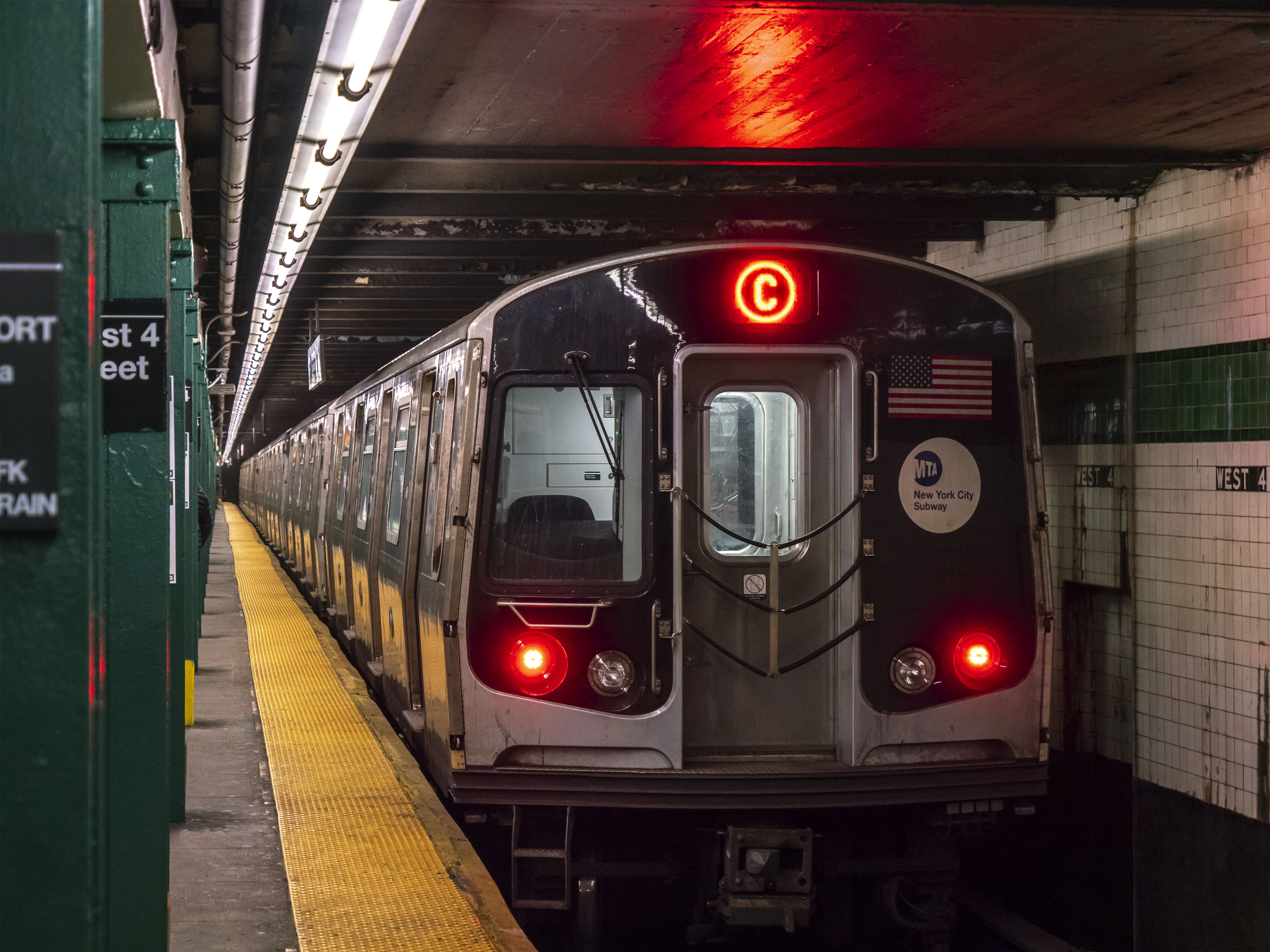
- Heavy Rail: This is the highest capacity and most expensive transit mode, consisting of long train sets operating in an entirely grade-separated right-of-way. Examples include the New York Subway or the Chicago L.
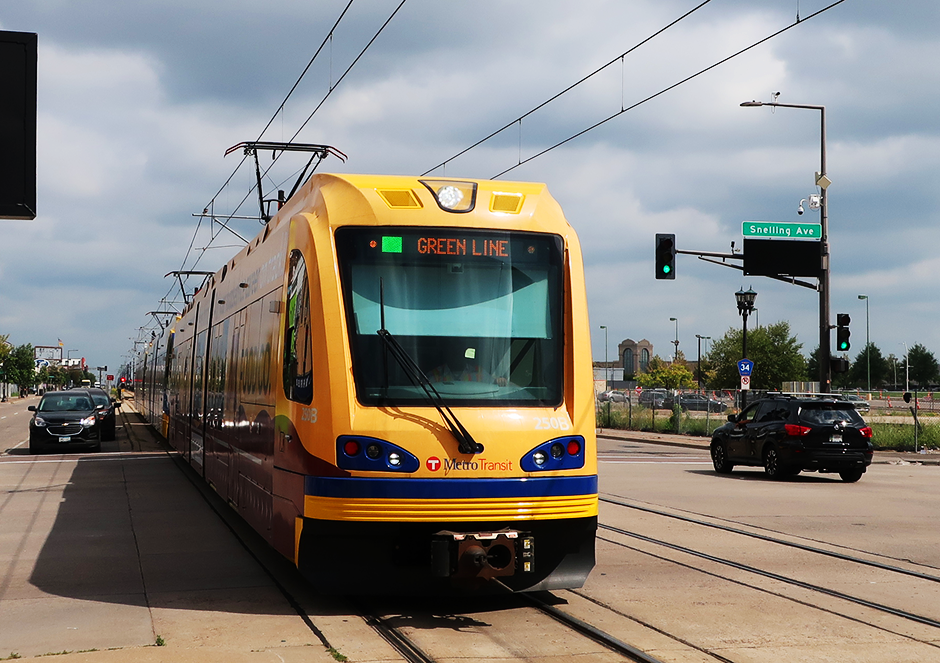
- Light Rail: This is a lower capacity mode and less expensive than heavy rail. LRT systems are mostly not grade-separated, but run alongside street corridors, usually operating in a dedicated lane outside mixed traffic. Examples of light rail are the Minneapolis Light Rail or the San Diego Trolley.
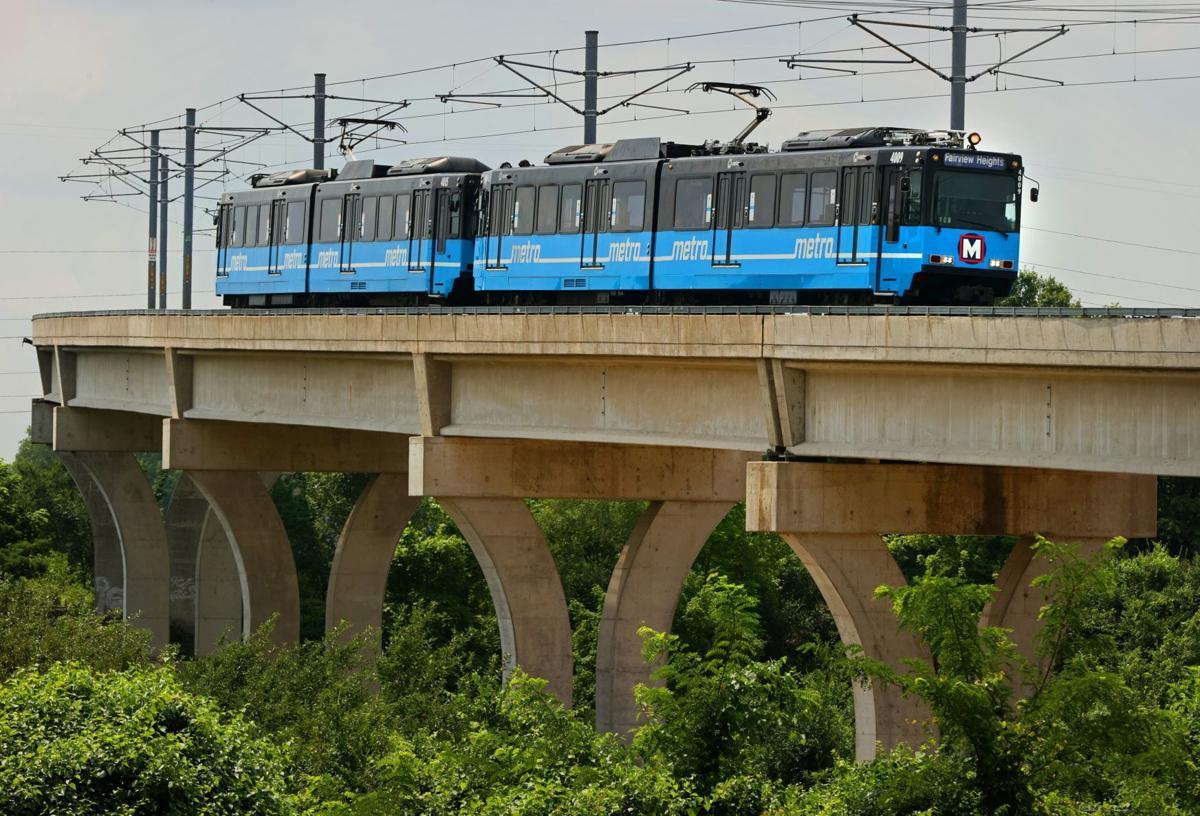
- Heavy+Light Rail: As a side note, there are many LRT systems which are very close to heavy rail but are still considered light rail. In these systems, where the vast majority of the system is grade-separated and operates like heavy rail, but there are still a few at-grade crossings. Examples of this are the Seattle Link or the St. Louis MetroLink.
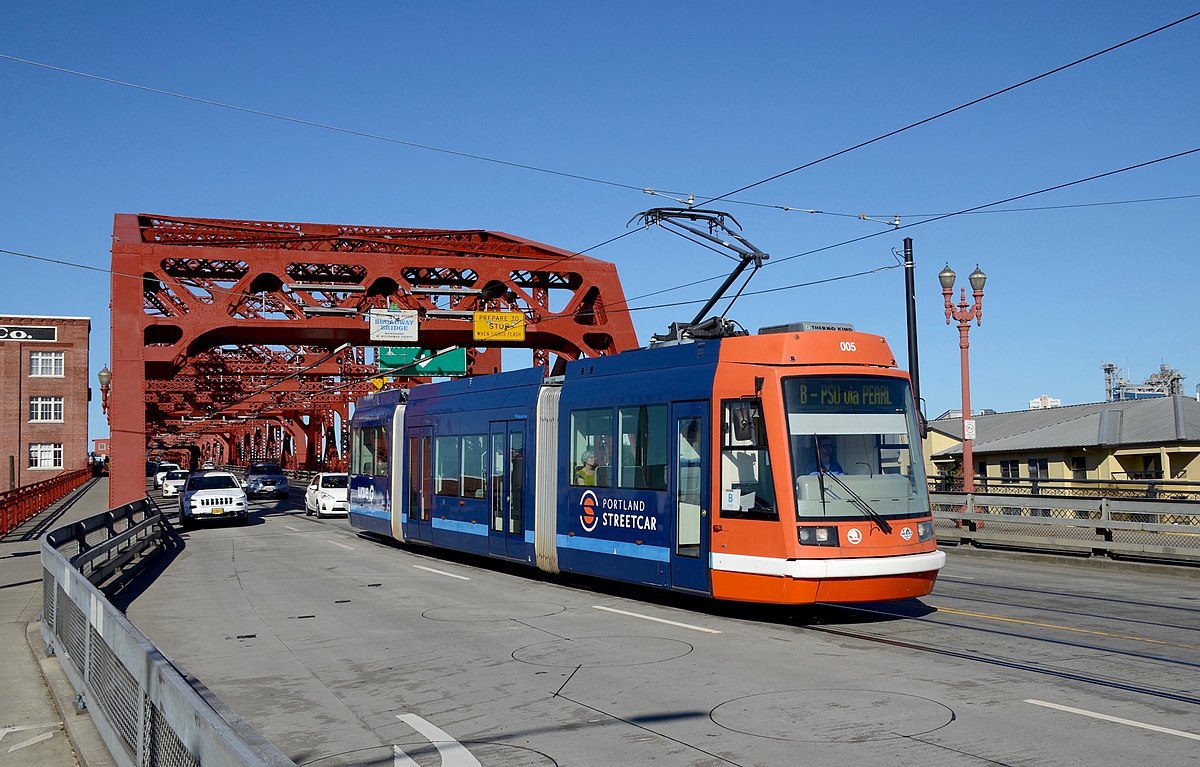
- Streetcars: In America, the distinction between LRT and streetcars is very fuzzy, but in general, streetcars usually refer to at-grade trains which run in mixed traffic, and are essentially treated like a city bus on rails instead of tires. Examples of streetcars include the Portland Streetcar or the Kansas City Streetcar.
Types of Buses
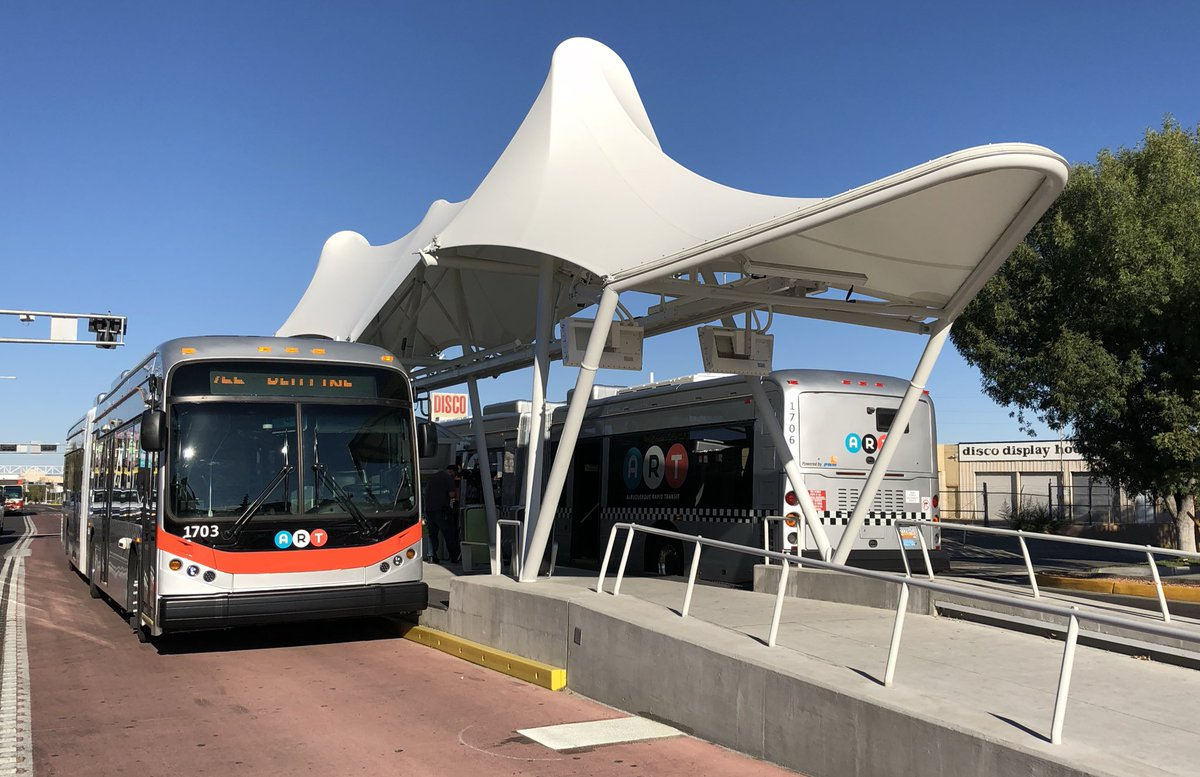
- "Heavy" BRT: Heavy BRT aims to replicate heavy or light rail with buses as much as possible, with dedicated concrete guideways separated from mixed traffic and rail-like stations. Examples of heavy BRT include the Albuquerque ART or the Cleveland HealthLine.
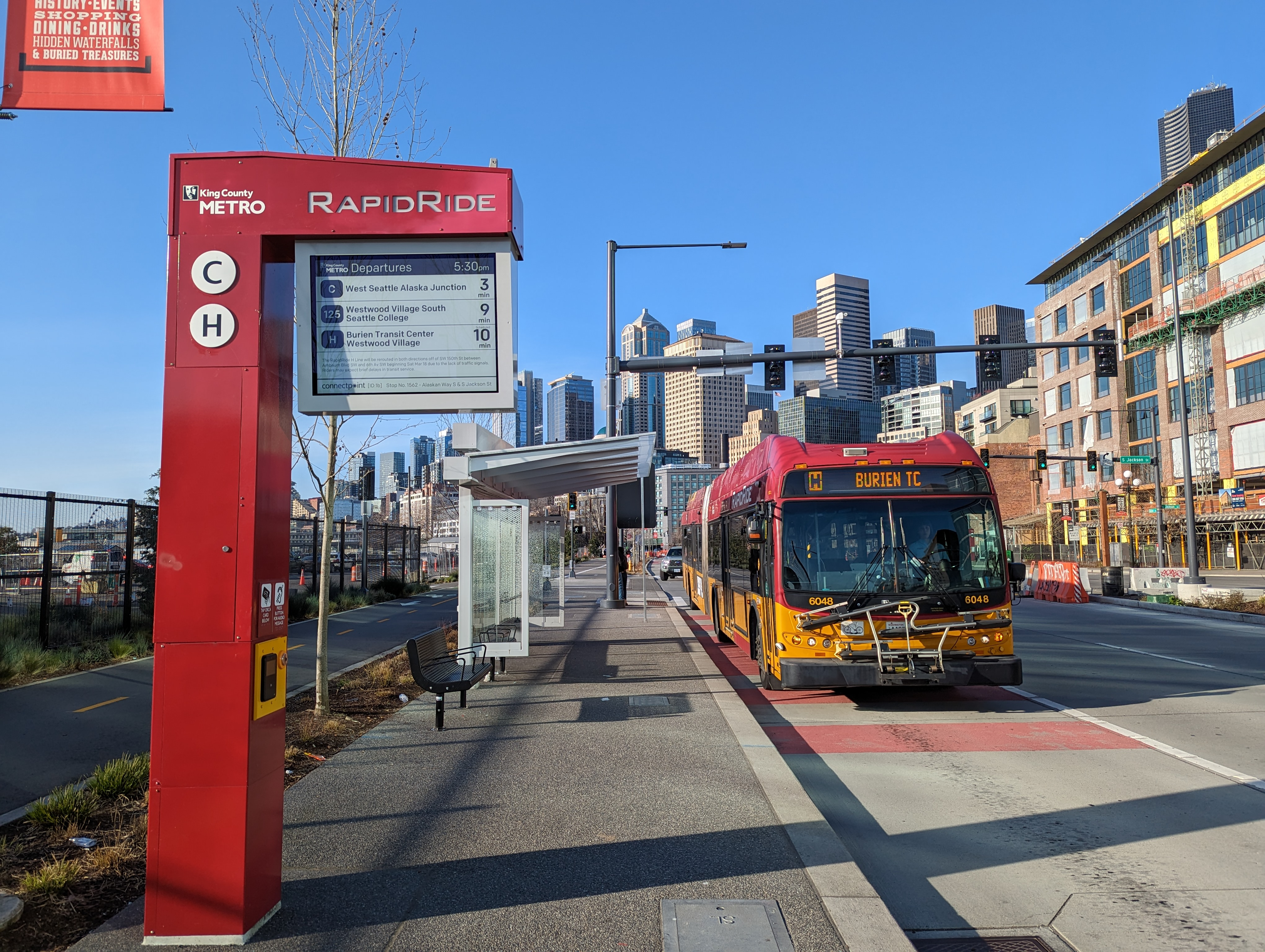
- "Light" BRT: Light BRT can be thought of as an upgraded city bus, with features like transit signal priority, optimized stop spacing, and off-board fare collection. Examples of light BRT include the Minneapolis aBRT, the New York SBS, or the Seattle RapidRide.
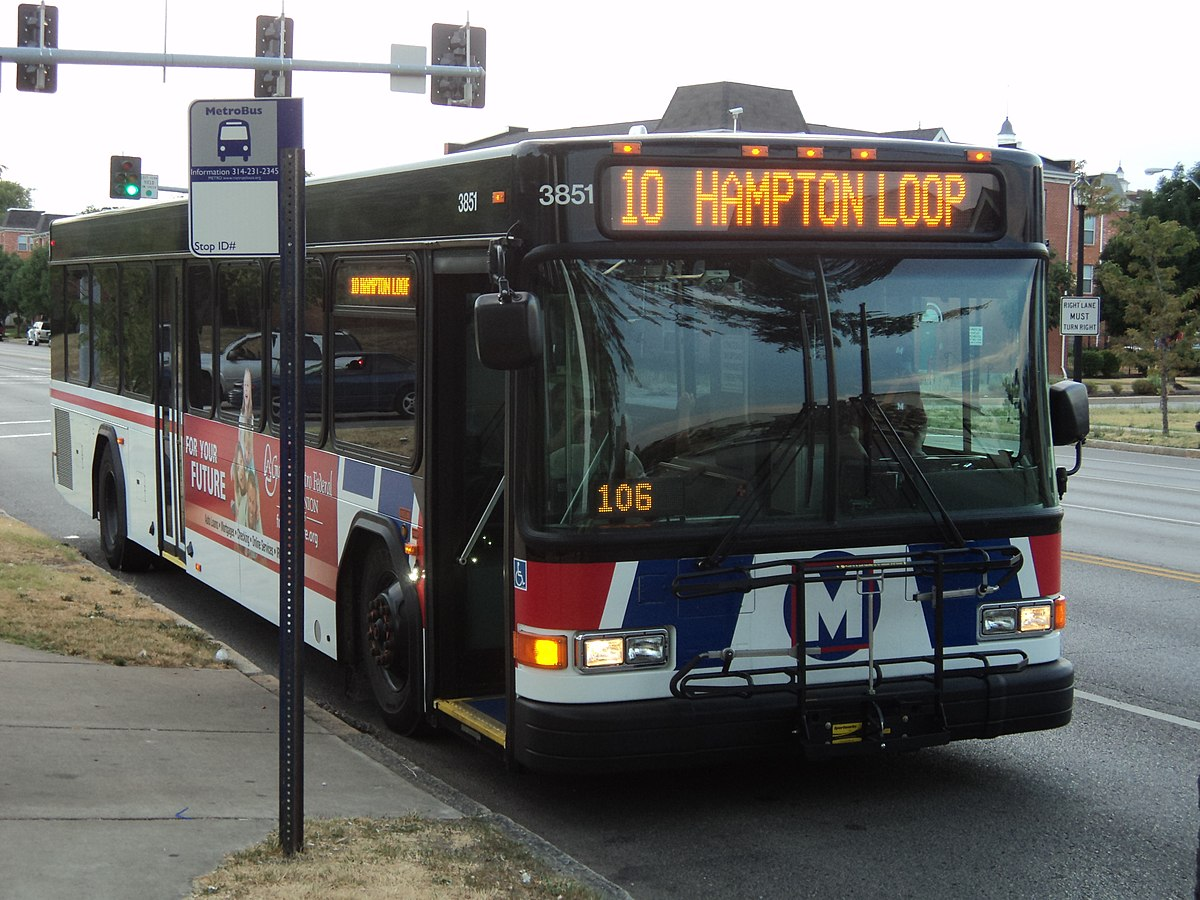
- City Buses: This is the standard mode bus which operates in every major city, operating in mixed traffic without any extra features to improve transit operations. It’s possible for buses to use special propulsion technology like electric engines with batteries, or elevated wires (i.e. trolleybuses).
Light Rail vs Light BRT
Next, I will go over the differences between light rail and light BRT. Because there are a lot of differences, I’m going to organize my thoughts into two sections. First, I will discuss the difference between modes in terms of the experiences that actual riders on the system will encounter. Second, I will discuss the difference between modes for everybody else - how it affects non-riders, government officials, citizens, etc. In both of these sections, I’ll describe what makes LRT better than light BRT, and vice versa, and I will do my best to make these sections as objective as possible.
Before I begin, I would like to acknowledge that many of these thoughts come from my reading on transit modes and systems around the country. In particular, Jarrett Walker’s post on Rail-Bus Differences was a very useful starting point for this post. Also, I'd like to acknowledge the discussions I’ve had with other transit enthusiasts for pointing out things I've missed (shout-out St. Louis Urbanists!)
Differences for Transit Riders
How Light Rail is better than Light BRT
- Overall Capacity: This is the biggest, most-cited reason why light rail is better than light BRT. Most common LRT vehicles have a carrying capacity of 200 to 300 passengers per car and can be connected in sets of two or three cars. Assuming a maximum of 2 minute frequency, this gives us a potential capacity of 27k passengers per hour per direction (PPHPD). On the other hand, the largest bi-articulated buses can carry 300 passengers at most. With no ability to combine buses together, this means a maximum capacity of 9k PPHPD.
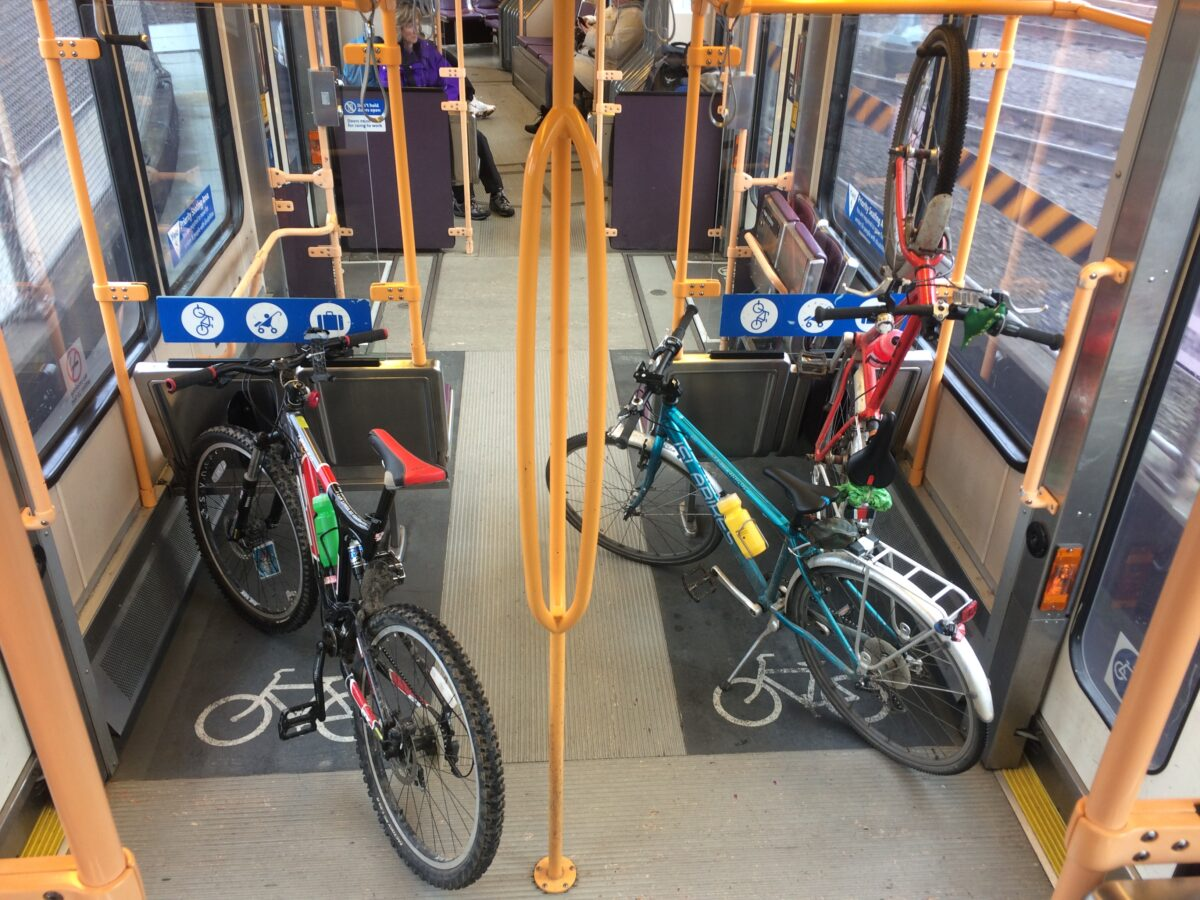
-
Bike/Wheelchair Capacity: On a related note, LRT can carry not only more passengers, but more large mobility aids like bikes, wheelchairs, or strollers. A single bus can only really hold 3 bikes on the front racks, while the interiors of LRT can be arranged to accommodate more bikes. The extra space on LRT also allows for more space for wheelchairs, strollers, scooters, and other types of mobility devices, or even just large items in general like suitcases or furniture.
-
Ride Smoothness: Because LRT is on metal rails, it is more smooth while accelerating, decelerating, and driving. This can be mitigated for buses by ensuring the street is well-paved and using bulb stations so that buses don't have to switch lanes every other block, but some intrinsic difference remains.
How Light Rail is equal to Light BRT
- Speed: Overall, the speed of buses and trains on city streets are approximately the same. I've seen some claims that buses are slightly faster at accelerating/decelerating, but most of the speed differences are due to the infrastructure supporting the transit, not the vehicles themselves. If both modes have dedicated lanes, signal priority, equal stop spacing, and off-board fare collection, they will both be roughly the same speed.
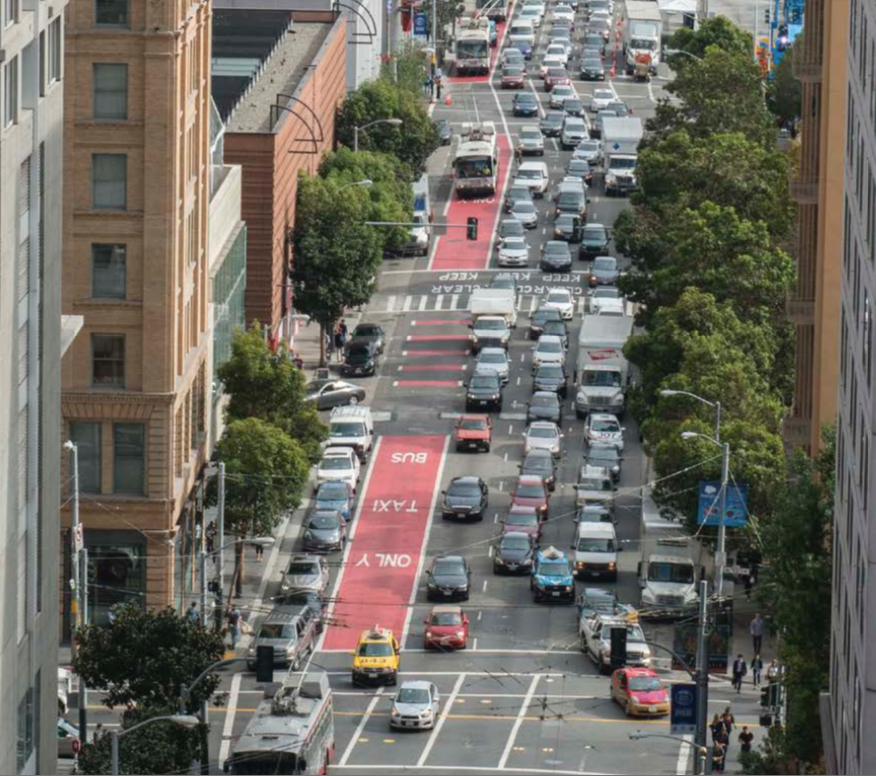
- System Legibility: For new riders who have never taken transit, learning how to take the train is generally easier to learn how to take the bus. However, with enough effort, transit operators can make buses just as legible. Well-designed maps can highlight BRT routes, and bright, continuous, red-painted lanes make it equally easy to understand the direction of a bus and a physical rail line.
How Light Rail is worse than Light BRT
- Operating Costs: The data shows that LRT generally has higher operating costs than buses. According to analysis by Christopher MacKechnie in 2020, in America, buses have an hourly operating cost of $122, while LRT has an hourly operating cost of costs $233 per hour. What this means for riders is that transit operators can afford to run more buses than trains under a fixed operating budget. As an example, if an agency is planning to run an LRT with 15 minute frequency, they could afford to run a bus with 8 minute frequency for the same cost, providing a much more useful service.
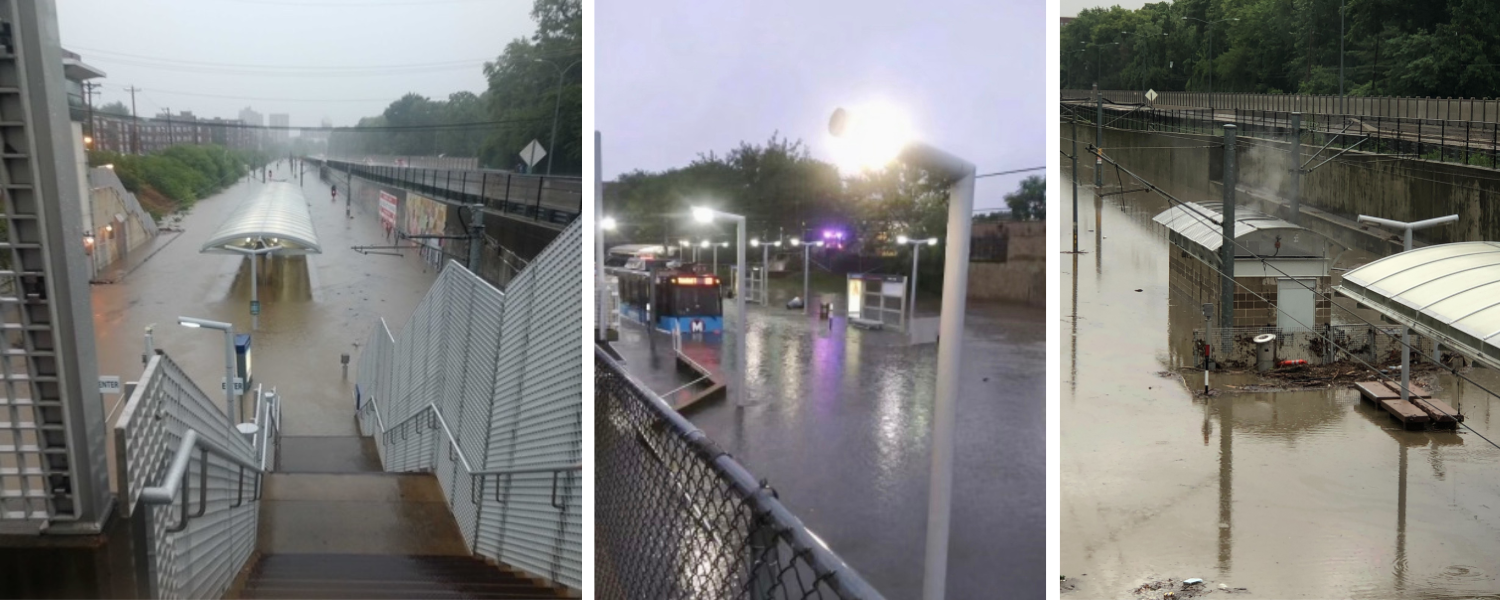
-
Dealing with Obstacles: Because LRT is on rails, there is essentially no way for it to maneuver around obstacles or go in places where there is no rail. This is most obviously a problem if there is an accident or the rails are blocked by e.g. a parked car. But even more importantly, this is a long-term issue that can prevent full service. For example, the 2022 St. Louis floods damaged the light rail signal box at one station, causing all trains to be plagued with single-tracking and slow speeds for nearly two years! If this were a BRT, the bus could just pick an alternate road to go around without harming operations.
-
Fewer Transfers: Because LRT is limited to rails, it makes it much more difficult to extend a route once it’s created. This forces passengers from outside to the immediate vicinity of the rails to transfer from a bus. For example, in St. Louis, we currently have the #4 and #11 buses which go from the edge of the city to downtown. But when the Green Line is built, these passengers will mostly likely be forced to get off the bus and transfer to the new LRT, and then transfer again to get to downtown. On the other hand, in an open BRT system, buses can easily be extended to continue past the end of the line, reducing transfers for customers.
-
Ease of Expansion: On a related note, the high costs of construction can make it difficult to ever expand an LRT system in the future. In St. Louis, there have been plans floating to extend the Green Line north, to cover the rest of the #4 bus route. But just this week, a new report suggested that this extension might not be politically feasible. And there is essentially no discussion at all about a potential southern expansion to cover the rest of the #11’s route. On the other hand, light BRT coverage is much easier to expand, since the base road network already exists.
Differences for non-Transit Riders
How Light Rail is better than Light BRT
-
Energy Efficiency: Trains are more energy efficient than buses, because of the gains of efficiency by using rails. This difference is reduced to some degree if you consider the energy usage of a three-car light rail vs a single bus, but overall, trains are more efficient on a per-passenger basis. Unfortunately, I can’t actually find hard numbers on how much energy exactly is being saved.
-
Maintenance: Trains require less maintenance than buses, and an electric train car will last longer than an electric bus. Additionally, trains cause less damage to roads, so you don’t have to maintain the steel rails as often as you do with the concrete pavement.
-
Development: An investment of hundreds of millions or even billions of dollars into LRT signifies a huge commitment that a government has towards improving that corridor. As a result, new train lines tend to lead to more private development surrounding the stations than new bus lines. However, the magnitude of this effect is quite unclear. For instance, a report from the St. Louis Fed concluded, “The general consensus from the academic literature and the findings presented in this report is that light rail is not a catalyst for economic development, but rather light rail can help guide economic development.”
-
Rail Bias: Possibly as a result of the above intrinsic differences mentioned, because of differences in actual implementation, or some unknown psychological difference, people tend to prefer trains over an equally useful bus. This leads to both higher ridership, and more prestige for a region (e.g. “We’re not a real city until we have a few train lines”)
How Light Rail is worse than Light BRT
- Construction Cost: This is the biggest reason that Light BRT is better than Light Rail. In America, Light Rail tends to cost $100M-200M per mile to construct (e.g. the proposed St. Louis Green Line will cost $196M per mile for the 5.6 mile route). On the other hand, Light BRT costs maybe $5M per mile (e.g. the recently built Minneapolis D Line cost $75M for an 18 mile route).
Conclusion
Finally, I will conclude this article with some of my opinions on the facts described above, going over each of the major differences between Light Rail and Light BRT.
Why LRT is not better than Light BRT
The biggest factor in favor of LRT, capacity, is not a relevant distinction for essentially any new project, as light BRT has enough capacity to operate most LRT routes. For example, the proposed Green Line LRT in St. Louis has a projected daily ridership of 5k. A hypothetical light BRT could carry 9k passengers every hour, well above the needed capacity. I actually couldn’t find a single example of a light rail system in the entire United States which needs the capacity of light rail and couldn’t get by with buses. If somebody has a counterexample in the comments, I’d love to see it.
One thing to note is that the ongoing driver shortage might change this math. For example, one could imagine a corridor where an LRT with 15-minute frequency has enough capacity but a bus with 15-minute frequency doesn’t. My two comments about this is that (1) If the driver shortage is such a big deal that it’s limiting frequency, that should definitely be the priority for where to spend money, and (2) If you’re only running 15-minute headways, then this is not exactly a corridor that needs significant transit investment in the first place.
Another note is that buses generally have enough capacity for day to day operations, but occasional large events like sports games or concerts might overrun this capacity. I would suggest in these cases to run special express buses on these days to transport passengers, rather than overbuilding rail capacity for most of the year.
I ride my bike and take it onto transit often, so I understand the appeal of bringing your bike on board to a light rail. But in reality, if our goal is to help urban cyclists, we would be much better off actually building protected bike lanes for a fraction of the cost of light rail. Alternatively, if St. Louis had an effective bus network, I wouldn’t even need to take my bike onto trains; I could just use the bus system to make connections!
Every other factor for transit riders actually favors light BRT over light rail. The smoothness of trains is nice, and makes it easier to read or work or relax while on it. But if I had to decide between a smooth LRT with 15-minute frequency and a less smooth light BRT with 8-minute frequency, I would definitely prefer the light BRT. And then when you consider that LRT usually leads to additional transfers for riders (usually to buses anyways), this only makes light BRT more attractive.
In terms of non-transit factors, I agree that rail leads to more development than buses. But if development is really our goal, we have much more effective and targeted methods for actually inducing development. For example, we could subsidize private development through upzoning and tax abatements or even take the money to build public development directly.
The factor of permanence is easily overcome - you could simply take the $200 million per mile which would have been used to construct the LRT and put it in a trust which can legally only be spent on transit operations in this corridor. The consideration of maintenance and efficiency also goes away based on LRT cost, as the interest alone from saved construction costs could be used to pay for maintenance and green energy technology many times over.
What should we do instead of Light Rail?
I’ve spent this entire post talking about reasons we shouldn’t build light rail. So what should we do instead? The short answer: it depends entirely on your priorities and why you even want to build light rail in the first place. If you’re going to spend $1.1 billion on a light rail line (as St. Louis has proposed to do), here are some things you could do with it instead:
Transit: If your priority is to help transit riders, you would be much better off by building Light BRT instead, for 1/40th of the cost. (i.e. for every mile of LRT you build, you could afford to build 40 miles of Light BRT). The below image is an quick example of what a potential 100 mile Light BRT system could look like in St. Louis. It would cost $400 million to build, instead of the $1.1 billion, 5 mile Green Line. You could then take the remaining $700 million to place in a trust fund for guaranteeing high frequency service along all these routes for years to come.
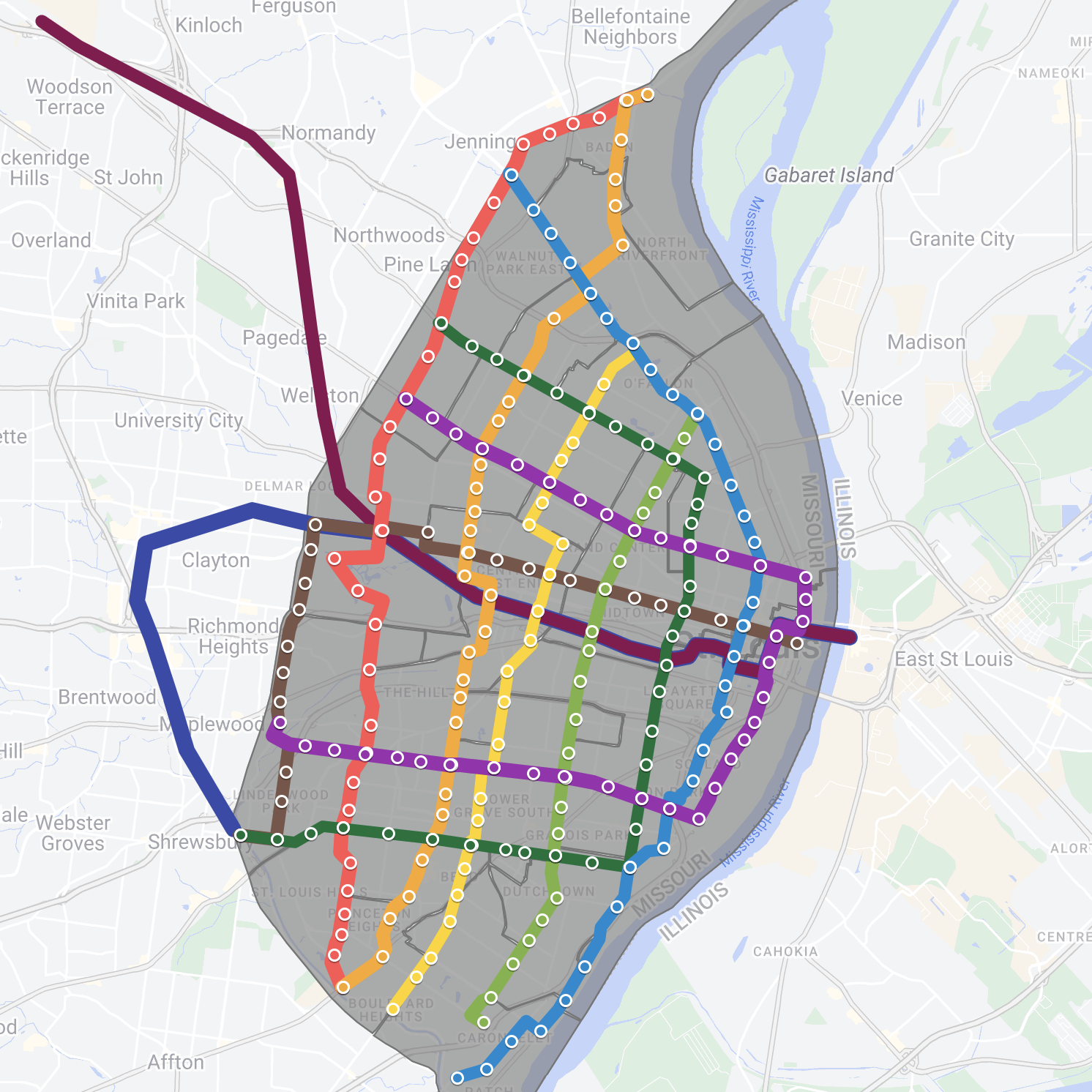
If you consider federal matching as part of your calculation, it’s roughly the case that the FTA will cover 80% of the cost of new light rail projects, and 50% of the cost of bus projects. For St. Louis specifically, both the 5.6 mile Green Line and my proposed 100 mile light BRT network would both cost about $200 million in local funding, with the federal government picking up the rest of the costs. I would definitely argue that the 100 mile BRT network provides a much higher value for $200 million than the 5 mile train line.
Long-Term Savings: If your goal is to reduce long term costs on street maintenance with LRT, you could instead take the $1.1 billion and put it in a fund to gain interest. The $44M you would get every year would be enough to quintuple current city street maintenance (we currently spend about $9M every year across the entire city).
Environmental Impact: I don’t have any numbers to back this up, but I imagine that the difference in emissions between an electric LRV and electric bus is not that high to begin with. On the other hand, you could just take the $1.1 billion and give a free 3kW solar system to every single household in the city, which would save many orders of magnitude more emissions.
Development: If your priority is to spur development, you should just take the $1.1 billion and use it to directly incentivize new construction. This could be done with tax abatements, paid-for without hurting school budgets. A very back-of-the-napkin estimate is that if $10 million is enough to cover this abatement, then $1.1 billion would be enough to pay for almost $16 billion in new development projects, 32,000 new housing units and 165,000 sqft of commercial space. For some context, in the last 10 years (2014-2023), St. Louis gained only gained 7,034 new housing units total. I haven’t seen any direct numbers as to how much development is expected from the Green Line, but I would expect this amount is far less than $16 billion, considering the state of the literature on LRT development referenced above. As a specific example, the Wellston station in St. Louis has been open for more than 20 years and still borders a huge undeveloped plot of grass.
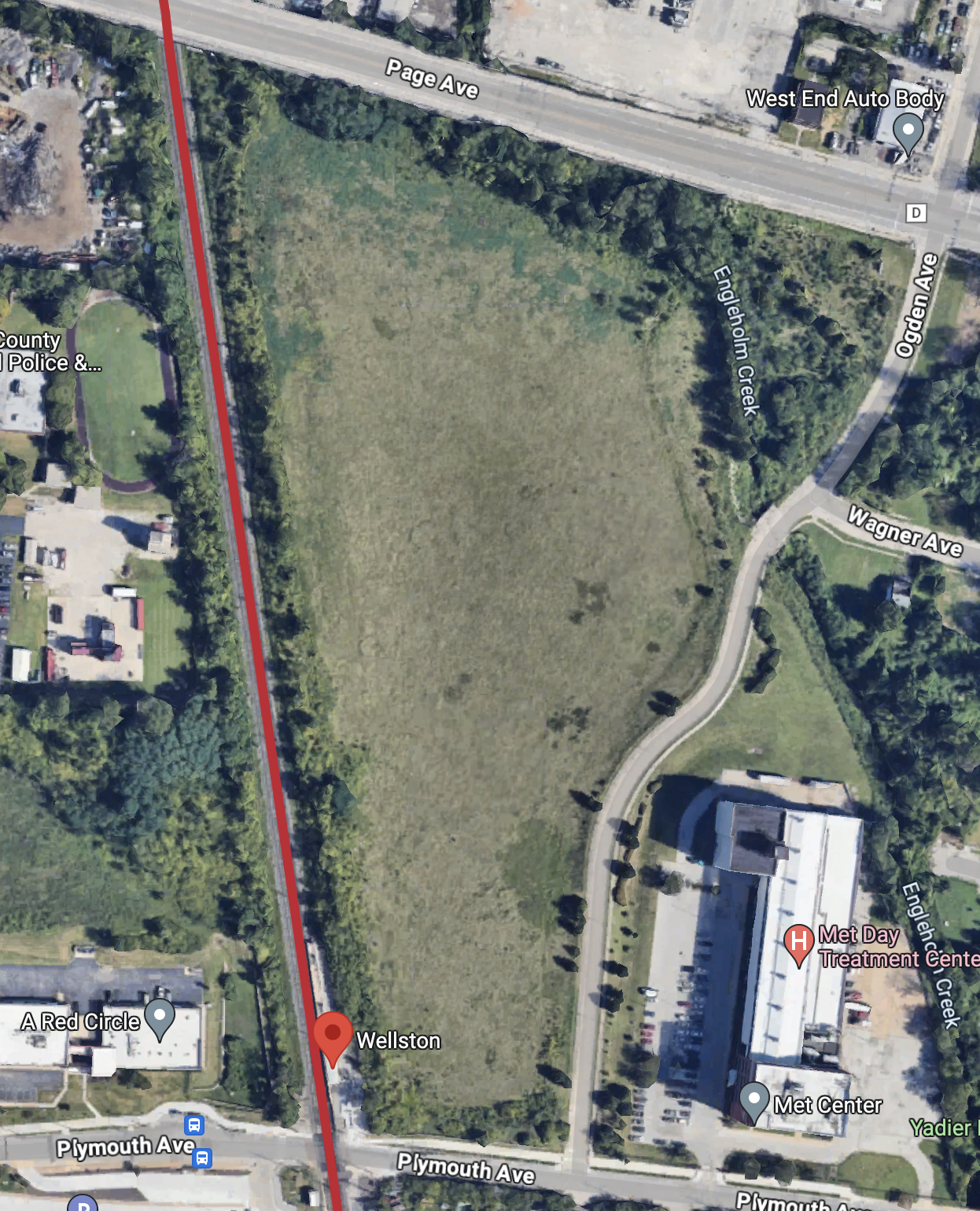
Bus Network Externalities: Some may object to my previous two recommendations of using the money to build solar panels and create tax abatements, rather than building transit, since funding sources are often not transferable like this, and rail funding might only be usable for transit projects. In these cases, I would still suggest building a large 100 mile light BRT transit network instead of a 5 mile light rail line. While I don’t have numbers to support this, I would strongly expect that this 100 mile network would lead to more emission reductions and more economic development than the 5 mile LRT line.
Takeaway
In my opinion, when you consider all of the differences, there is really no reason why we should be building Light Rail or Streetcars anywhere in America. For transit riders, light BRT provides an arguably more useful service than LRT, at a fraction of the cost. For non transit-riders, LRT does have some positive effects, but in an incredibly cost-inefficient manner.
I’m sure this post has some very controversial opinions. If you disagree with me, and think I’m missing some broader point about LRT, feel free to let me know in the comments. I’m especially interested in actual case studies where the capacity of LRT was necessary over light BRT, or where LRT demonstrably led to increased development.


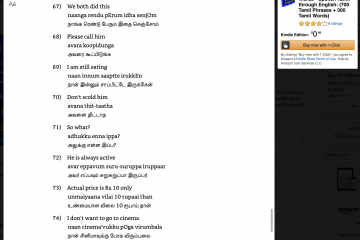
0 Comments